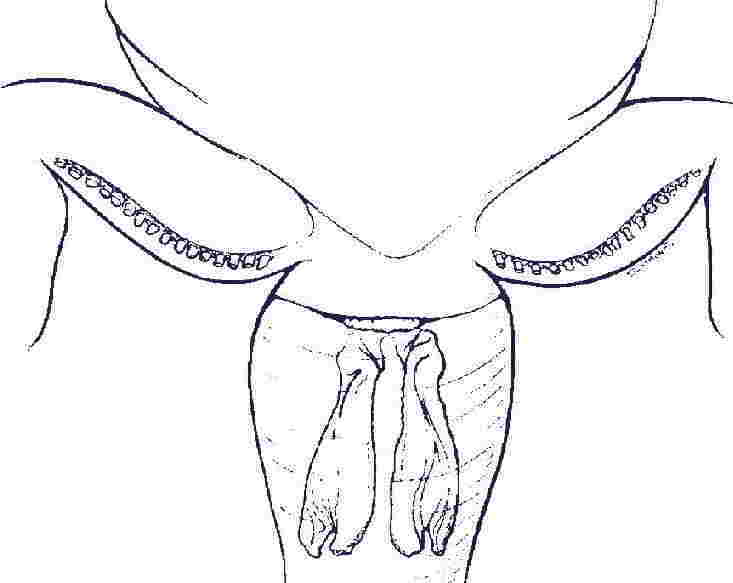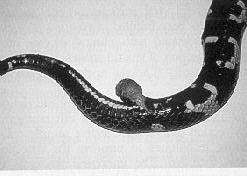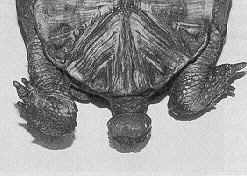
Melissa
Kaplan's
Herp Care Collection
Last updated
January 1, 2014
Hemipenes
©2000 Melissa Kaplan
Snakes and lizards (saurians) have a bi-lobed reproductive organ called the hemipene. This organ is tucked away in the tail, emerging from the body through the vent, generally during mating when it is inserted into the female's vent. Some males, such as green iguanas, may ejaculate during breeding season outside of mating attempts.
1.Drawings from H. E. Evans, Reptiles: Introduction and Anatomy. In, Zoo and Wild Animal Medicine, Second Edition. Murray E. Fowler, Ed. 1986. W. B. Saunders Company. Drawing by C. Guard. 2.-3. Photos from Dale DeNardo. Reproductive Biology, in Reptile Medicine & Surgery. Douglas Mader, Editor. WB Saunders, NY, 1996. Click above images to see enlargement.
The efficacy of the bi-lobed organ can be seen in this photo of Wally and Sylvia mating during their first breeding season:

Some sauria may evert one or both hemipenes when defecating, especially when they are straining due to constipation or when heavily infested with internal parasites. If sick or heavily parasitized, the hemipene may not retract back into the body as it should, and remain hanging out. Such prolapses, if left untreated, can result in tissue death, infection, and the need to amputate the organ.
The frequency with with some species, such as green iguanas, evert their hemipenes, makes it problematical to keep them on any type of particulate substrate. The particles stick to the everted organ and may escape being brushed off by the lips of the vent as the organ is pulled back through, leaving them deposited in the cloaca where they can cause mechanical injury (scraping, lacerating or puncturing the tissues lining the cloaca as well as the hemipenes when they move through the cloaca), and block the smooth passage of the feces, urates, and hemipenes.
Seminal plugs formed of cellular debris, seminal fluid, etc. may form within the grooves of one or both lobes. They can often be disconcerting to the reptile keeper who hasn't encountered them before, either deposited with the urates and feces, ejaculate, or in stuck through the venter, collecting a head of fecal material.
cloaca: Greek for "sewer", the cloaca the chamber inside the vent in which feces and urates are pooled prior to elimination)
sauria: Snakes and lizards are taxonomically grouped together in the order Squamata due to the fact that they share more features in common than not, including the hemipenes. Chelonians (turtles and tortoises) have a single lobed organ that typically freaks chelonian owners out the first time they see it as it is huge in relation to the overall body size, and spreads out looking more like a chunk of intestinal tissue or a very strange looking flower, making squamate hemipenes look rather pedestrian by comparison. For additional information on reptile classification, see the TIGR Reptile Database.
Related Articles


